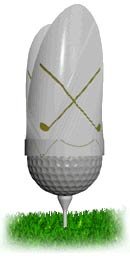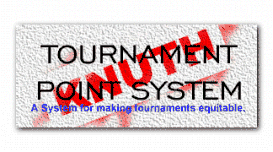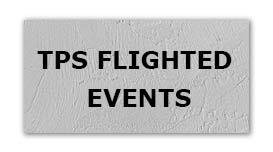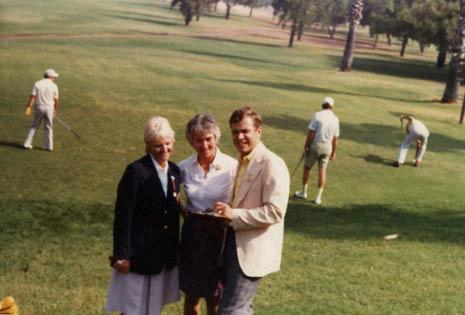|




|
Tribute to Mr. Gordon (Joe) Ewen
and How it All Began
�Joe� Ewen passed away February 27, 2009 in his Winnetka, IL home at the age of 93. He was the man at the USGA who discovered me.
I was a student at the Naval Postgraduate School in Monterey, CA and was a young Naval officer in 1975, only five years out of the U. S. Naval Academy. I had worked on a project in a graduate course called Design of Experiments. Being a golfer, I chose to work on developing a way to �obstacle rate� golf courses because at the time courses were illogically rated mostly by their length and not their difficulty. I called the nearby Northern California Golf Association and asked for their help to get onto golf courses to evaluate their obstacle difficulty for scratch golfers. Ron Read (a long-time USGA Regional Affairs manager and starter at the first tee at the U S Open) worked at the NCGA at the time and he kindly assisted in getting me access. I collected thousands of golf shots data on about ten courses and rated these courses for obstacle difficulty such as fairways, green surface, bunkers, trees, rough, out-of-bounds, etc. At the time I rated the factors on a scale of zero to five (I later changed it to 0-10). I wrote a Fortran software package to calculate an optimum solution using a mathematical model called �Over-relaxed multi-variate regression. In those days, the Naval Postgraduate School used a large central computer that only could be inputted by IBM cards. I completed the course in 1976 and gave a copy of my research to the NCGA. It proved that the obstacles on a course indeed made a big difference in what their course rating should be for scratch golfers. It also showed that the obstacles had different relative values and should be weighted in the obstacle rating process. The NCGA liked my procedure so much that they had me present my concepts to their course rating committee at a seminar held at the Almaden Golf Club in San Jose in April, 1977. (www.popeofslope.com/history/newratings.html) . At the bottom of this article I inserted an early rating form that I used to rate Pinehurst #2.
Unbeknownst to me, the NCGA had forwarded a copy of my report to the USGA saying that there might be some merit in my theories of course rating. Mr. Lynn Smith, contacted me in late 1977, when he was the USGA�s Chairman of the Handicap Procedure Committee. I flew to Pasadena to discuss course rating with him. In 1978 after graduating with my MS degree and serving on Carrier Group Four staff in the Mediterranean Sea on the aircraft carrier USS Saratoga, I received a letter from the USGA asking me to be a consultant on the USGA�s Handicap Research Team that the USGA was forming. My work in the 70�s became the USGA Course Rating System (course rating for scratch golfers). In the early days our HRT was composed of Dr. Richard Stroud, Dr. Clyne Soley, Dr. Lou Riccio, Dr. Fran Scheid, Frank Thomas and myself. We met four times a year, often at The Villages in San Jose where Clyne lived.
As a USGA Handicap researcher, I developed the Slope Rating system in 1979 and 1980. I formed teams of average golfers from each of nine courses in the Norfolk, VA area where I lived. I recall that the Kingsmill River course (the first course in America to be Slope Rated, as it was the first one that I rated) was the most difficult. Other courses included Newport News Golf Club, Elizabeth Manor, Oceana NAS golf course, Cedar Point CC, where we had a reception with all the players after the project was finished. The Hamptons public course was the easiest (lowest Slope). I had the volunteers play a home and home with each other and record where every golf shot went. I rated these courses for �bogey golfers� and used the data to develop a �Bogey Rating� system. By comparing the Bogey Rating to the Scratch Rating, I was able to develop the Slope Rating for each course--A way to predict how fast scores go up as the golfer�s handicaps go up.
The following is an excerpt from a local newspaper in December 1979 that puts names to the details of this experiment:
Knuth contacted local golf clubs for assistance and in only a few days he had 10 volunteers from each course, all amateur golfers with handicaps of between 18 and 22 (an average of 20). to comprise the Tidewater Research Team.
"This level of player was chosen because he represents the middle of the handicap scale, which comprises the majority of the approximately 13 million golfers in this country," Knuth explained.
The TRT club coordinators and their clubs: Bill Cotten of Lake Wright, Clarence Hatchet of Newport News Municipal. Joe Miller, Oceana NAS; Squire Pridmore of Sewell's Point, Bill Sargent of Sewell's Point. Ken Bums, Kingsmill; Andy McCrone, Princess Anne, George Stoneham, Eagle Haven; Clyde McLemore of Langley AFB, and Leroy Hunnicutt of the Hampton Golf and Tennis Center
Here are the nine courses played by the research team: Hampton. Sewell's Point, Elizabeth Manor, Newport News Municipal, Oceana NAS (blue course), Williamsburg Country Club. Kingsmill, Princess Anne and Cedar Point
The object was to determine the difficulty of each hole (on the average) and the high handicapper's ability to cope with these difficulties. Holes were rated on a scale of one to five, five being the most difficult, with regard to: Topography, fairways (width), recoverability and rough, out-of-bounds, water hazards, trees, bunkers, greens (size and undulations), environment and psychological Psychological? "Yes, there's a strong psychological factor in golf,� said Knuth. "For example, take the 18th hole at Kingsmill which requires the tee shot to carry 180 yards over water (from the white tees). This may be no problem for the scratch golfer, but the water could present a psychological problem for the high handicap golfer He may have doubts about his ability to hit over the water."
Each golfer filled the data charts for each hole at the nine courses and it was Knuth's job to analyze the hundreds of pages of information and make his in-depth report to the USGA. Later this month in Chicago, Knuth will address the USGA's annual business session and report on the Tidewater end of the experiment.
At the USGA Annual meeting in January, 1980, the USGA Handicap Procedure Committee decided that the Slope Rating procedure had merit and the Northern California Golf Association volunteered to conduct a test. I Slope Rated five or six courses and NCGA volunteers repeated the test that I did in Virginia, but this time I predicted in advance what handicap they needed for the test courses. The results were excellent and it made total sense to the golfers that this system made handicaps more portable.
By this time in my life, I was 33 and I had been at sea for nearly 1000 days in the last four years. I was rating these courses on �free� inport weekends and working on my calculations after hours at sea. I was quite tired of going to sea and so was my family. The USGA heard that I was interviewing for jobs in the defense industry and Harry Easterly, the USGA�s Executive Director at the time, flew to Norfolk in 1981 and handed me a job offer to join the USGA staff. I transferred to the Naval Reserve and joined the USGA staff on October 1, 1981 serving as Senior Director of Handicapping until June, 1997.

Dean (pre-USGA) with women's USGA officials in 1980
Although I had other responsibilities, I spent a great deal of my time at the USGA conducting course rating seminars for golf associations around the country. For sixteen years, I flew into almost every significant airport in the US�more than once. The System grew quickly. In 1982, the Colorado Golf Association rated all of its courses using the new procedure, under the leadership of Handicap Research Team member Dr. Byron Williamson (the inventor of the first flea collar). In 1983, Colorado tested the Slope System with positive results. Five other states joined Colorado in the test during 1984, By 1985 there were 20 states using the System. The others followed in subsequent years. I hired Doug Sullivan to help me to conduct rating seminars and wore him out with his travels. I required that the team leader for every Course Rating team of four be trained at a USGA Course Rating seminar. I also required that a course rater from every golf association attend annual calibration seminars to ensure consistency. We re-vamped the Course Rating manual with a major committee effort. Colonel Warren Simmons and Jeanne Myers were great contributors to that effort. Since January 1, 1990, every golf association in the United States that rates golf courses has used the USGA Course Rating System that I created. By the time that I left the USGA in 1997, I had traveled the world and many foreign golf associations had become licensed to use the System including all of continental Europe, Canada, Ireland, Wales, Sweden, Denmark, Germany, France, Bermuda, the Republic of China, Costa Rica, France, Hong Kong, India, Jamaica, Korea, Malaysia, Mexico, the Netherlands, Indonesia, Singapore, Kuala Lumpur and the Philippines. When I left the staff, I hand-picked my replacement�Kevin O�Connor, who had been the staff leader for handicapping and course rating at the Northern California Golf Association�from where all my work had begun. Kevin has carried-on quite well.
It was only after I joined the USGA staff and was reading through past handicapping correspondence that I saw who gave me the opportunity to start all this great revolution in handicapping at the USGA. It was a carbon copy of a short but succinct official letter from Joe Ewen to Lynn Smith in mid-1977 telling him that he had read my course rating thesis that the NCGA had forwarded to him and he thought that I was a �pioneer� in handicapping. He urged Lynn Smith to meet me and give him back a report on what he thought of me. It was Joe Ewen that made it all begin and he also was instrumental in getting the USGA to hire me to implement the system. Up until when I was hired, there had never been a Director of Handicapping on the USGA staff. In fact, including secretaries, I recall that there were only 22 people on the USGA staff and most worked in the old building in Far Hills, NJ that is now their museum. When I started, I was given an extra $5,000 a year in 1981 to help start-up the Golf Handicap and Information Network (GHIN) service that has grown to 2 million golf handicaps being calculated for golf associations in 42 states. I am pleased that handicapping throughout the world has been bettered as a result of my efforts, both in course and Slope Rating, but also in other improvements made in the USGA Handicap System procedures.
Over the years Joe Ewen attended several of the handicapping and course rating seminars that I conducted and he always was attentive and never asked questions in public. After each meeting he would ask me several very knowledgeable questions on some aspect of handicapping that I had lectured on. He was a very intelligent man and I am very grateful that he noticed me more than 30 years ago. May he be happy in heaven. He was a wonderful man.
|






